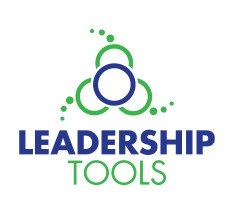Ethics-Assessment
Use this online-leadership-tool to do an ethics-assessment and improve workplace ethics and integrity. Reap the benefits of more individual and organizational integrity.

Donna Rae Scheffert, author, is President of Leadership Tools, a U. S. based consulting firm and a retired Leadership Development Specialist from the University of Minnesota Extension. She spent over 20 years creating leadership information, tools and training. She is the owner of online-leadership-tools.com and one of her favorite things is doing an organizational ethical-assessment. For more information on Ethics-Assessment
Overview of Five Integrity Indicators
Ethical issues and integrity questions are common within organizations - yet, often they are under analyzed and discussed within organizational development. That is why this ethics-assessment can be useful. Five main areas are important for organizational integrity and strong ethical foundations.
Integrity is in the eye of the beholder - and when several of these indicators are weak, organizations are perceived to 'lack integrity.' This can result in loss of talent from the organization. Don't let ethical issues or workplace ethics derail your great organization!
These are the areas that you may focus on to improve workplace ethics. They include:
1. Ethical Communication Patterns:
To what extent are patterns of communication open and respectful?
2. Ethical Habits:
What are the overall ethical principles and values that characterize the organization’s environment?
3. Mission and Structure:
How well do the mission and structure of the organization prepare us to respond to an ethical challenge?
4. Ethics of Leaders and Constituents:
To what extent do leaders and other members of the organization model integrity and responsibility?
5. Ethical Problem-Solving Process:
How typically does the organization employ ethical problem-solving processes?
ETHICs-ASSESSMENT FOR ORGANIZATIONS
Think about an organization. Read the statements and circle the number of the statements that Need Attention within your organization. While they may not yet be 'ethical issues' they are areas that could be improved upon. Compare responses with others on your team and identify the most frequently selected statements. This ethical-assessment can become the focus area for your organizational development goals.
Ethics-assessment of Communication Patterns

1. Mutual trust and respect exist within the organization and among the groups.
2. There is respect for the views of others.
3. Honesty and openness characterizes relationships among affected parties and key players.
4. The current norms governing the organization are communicated and understood.
5. The environment provides freedom to share feelings and thoughts.
6. A champion for an ethical cause is not silenced by the environment.
7. Dissent is permitted so there is a lack of fear.
8. There is a willingness to ask for help and consultation when a problem arises.
Ethics-assessment of Habits
9. There is a sense of accountability within the organization.
10. There is a desire for and a sense of fairness.
11. There is a respect for the views of others.
12. The principles of the organization are integrated into the work of the organization.
13. There is a sense of the right thing to do.
14. There is consistency between the values of individuals and those of the organization.
15. The organization allows addressing an issue from an ethical perspective.
16. There is a willingness to sacrifice ad pay a price in order to do the right thing.
17. The organization and individuals are wiling to recognize a problem as an ethical one.
18. There is an ability to set priorities for ethical and other issues.

Mission and Structure
19. A firm sense of mission is shared throughout the organization.
20. The organization’s mission and goals are clear and ordered in priority.
21. The organization has assumed an ethical posture or mission.
22. The organizational structure provides from adequate planning and participation.
23. The organization has a sense of stewardship; a sense of obligation toward others.
24. Organization anticipates and plans for consequences and conflicts resulting from a decision.
25. The ethical structure in the organization is clear in terms of who assumes responsibility.
Ethics of Leaders and Constituents
26. Mutual trust and respect exist within the organization and among the groups.
27. There is respect for the views of others.
28. Honesty and openness characterizes relationships among affected parties and key players.
29. The current norms governing the organization are communicated and understood.
30. The environment provides freedom to share feelings and thoughts.
31. A champion for an ethical cause is not silenced by the environment.
32. Dissent is permitted so there is a lack of fear.
33. There is a willingness to ask for help and consultation when a problem arises.
Ethical Problem-Solving Processes
34. A search for options is encouraged.
35. There is a willingness to spend money to resolve the issue.
36. An ongoing commitment to joint discussion and resolution among the parties involved is evident.
37. Data and facts are available and analyzed.
38. Alternative choices of action are perceived as available.
39 Time is taking to resolve the problem.
40. People are willing to accept consequences, including adverse ones.

Consultant for Ethics-Assessment
Link to an additional source of ethical-assessment
Trustworthy Source of Ethics-Assessment, Facilitation, Training, Strategic Planning
Donna Rae Scheffert
809 Mayflower Ct.
Northfield, MN 55057
Let me assist you and your organization.
Call me at 612.360.4484
Email at leadershiptools@charter.net